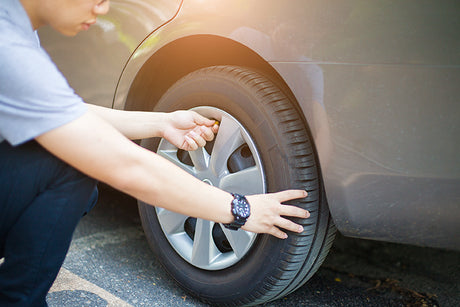Ensuring that your vehicle is running efficiently and safely is paramount for any car owner. One often overlooked aspect of vehicle maintenance is the wheel alignment. A proper wheel alignment is essential not only for a smooth driving experience but also for extending the lifespan of your tyres. In this article, we will delve into the importance of a wheel alignment and how it can save you money in the long run by preventing premature tyre wear.
Understanding Wheel Alignments
Wheel alignment, also known as tyre alignment, involves adjusting the angles of the wheels so that they are set to the car manufacturer's specifications. The purpose is to allow the suspension and the steering systems to operate at their desired angles - this reduces tyre wear and ensures straight, predictable vehicle handling.
4 Wheel Alignment vs. 2 Wheel Alignment
There are two main types of wheel alignment: 4 wheel alignment and 2 wheel alignment. A 4 wheel alignment is typically required for all-wheel drive vehicles and any car with an adjustable rear suspension. This process involves adjusting both the front and rear wheels so that all are in alignment with each other.
On the other hand, a 2 wheel alignment, also known as a front-end alignment, is suitable for vehicles with a fixed rear axle. Here, only the front wheels are adjusted. However, most modern vehicles will benefit from a 4 wheel alignment for optimal performance and tyre wear.
Wheel Balancing vs. Alignment
It's important not to confuse wheel balancing with a wheel alignment. Wheel balancing ensures that tyres are balanced with the wheel weights to avoid vibrations, while wheel alignment adjusts the angles of the tyres to ensure they make proper contact with the road.
A regular wheel alignment can have a number of benefits for your vehicle and your wallet.
Extended Tyre Life
Misaligned wheels can lead to uneven tyre wear, which means you'll need to replace your tyres more often. Regular wheel alignments can prevent this, ensuring that your tyres wear evenly and last longer.
Improved Fuel Efficiency
When your wheels are not aligned, your vehicle's engine has to work harder to propel you forward, which can lead to decreased fuel efficiency. Aligning your wheels can help to reduce rolling resistance, which means your car will use less fuel and you'll save money at the pump.
Enhanced Safety
Proper wheel alignment also contributes to the safety of your vehicle. Misaligned wheels can affect the handling of your car, making it more difficult to steer, especially in emergency situations. Keeping your wheels aligned can thus help you maintain better control of your vehicle.
Comfortable Ride
A car with misaligned wheels can often lead to a rough ride. This is because the vehicle may pull to one side or the steering may vibrate. Aligning your wheels can help to eliminate these issues and ensure a smoother, more enjoyable driving experience.
How Long Does a Wheel Alignment Take to Do?
The time it takes to perform a wheel alignment can vary based on several factors, including the type of vehicle, the extent of misalignment, and the equipment used by the service center. Typically, a wheel alignment can be completed in about an hour. However, if additional problems are discovered, such as worn suspension parts, the service may take longer.
How Often Should You Get a Wheel Alignment?
Most manufacturers recommend getting a wheel alignment every 10,000km or twice a year, whichever is most often. However, this can vary depending on your driving habits and conditions. If you frequently drive on rough roads, carry heavy loads, or hit a curb or pothole, you may need to have your alignment checked more often.
Signs You Need a Wheel Alignment
- Your vehicle pulls to one side while driving.
- The steering wheel is off-center when driving straight.
- Uneven or rapid tyre wear.
- Squealing tyres.
- A steering wheel that vibrates.
If you notice any of these signs, it's time to schedule an alignment for your vehicle.
DIY vs. Professional Wheel Alignment
While some car enthusiasts may attempt to perform a wheel alignment at home, it's a task that generally requires professional equipment and expertise. Modern alignment machines use precise measurements and laser technology to ensure that all four wheels are perfectly aligned. Without this equipment, a DIY alignment may do more harm than good.
Final Considerations
To ensure the longest life for your tyres and the best performance from your vehicle, regular wheel alignments are a necessity. Not only does it extend the lifespan of your tyres, but it also improves fuel efficiency, enhances safety, and ensures a comfortable ride. Keep an eye out for signs of misalignment and consult with a professional service center to keep your vehicle running smoothly. Remember, investing a little in wheel alignment now can save you a lot in tyre costs down the road.








